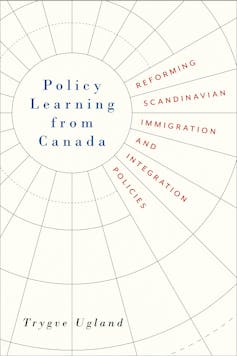
(Shutterstock)
Trygve Ugland, Bishop’s University
As a wave of “Scandimania” sweeps the world, Canada is serving as an inspiration for Scandinavian countries dealing with the challenges of increased immigration and ethnic diversity.
Scandinavia has, for a long time, been portrayed as a model for other countries.
The international fascination with Scandinavia derives from a broadly shared impression that Denmark, Norway, and Sweden have successfully combined private capitalism and economic growth, on the one hand, with state intervention and social equity on the other.
International observers have also noted that economic efficiency and social welfare in Scandinavia have reinforced each other. That’s shown by consistently high rankings in international indices of competitiveness and happiness.
A few years ago, The Economist featured a bearded, horned-helmet-wearing Viking on its front cover, with the headline The Next Supermodel.
The overriding wisdom is that the world has a lot to learn from Scandinavia.
The Scandinavian model has also received substantial attention in Canada. Academics, journalists, politicians, and leaders of non-governmental organizations alike continue to evoke Scandinavian solutions to Canadian and global challenges.
Canada no longer a ‘policy borrower?’
Canada and the world have looked to Scandinavia on many issues. These include proportional representation, voter turnout, coalition governments, gender equality, education, environment, and energy policy, welfare provisions and health-care delivery strategies — not to mention international humanitarianism and conflict resolution.
In contrast, Canada is usually described as a policy “borrower.”
But in the area of immigration and integration policies, the relationship has turned on its head. Canada is the policy lender; Scandinavia the policy borrower.
As immigration novices, Denmark, Norway and Sweden have been searching for inspiration and new solutions abroad. And the Canadian immigration and integration policy model is attracting avid interest.
In fact, the Canadian model has played a significant role in the Scandinavian reform process since the early 2000s.
In particular, Canada’s positive view of “immigrants as a resource” has served to inspire new attitudes towards labour immigration in Denmark, Norway and Sweden.

(AP Photo/Andrew Medichini)
Canada’s focus on skilled economic immigrants — a group that ostensibly integrates more easily in the labour market — has been held up as an alternative to humanitarian and family migrants. That phenomenon has contributed to a significant immigrant-native employment gap in Scandinavia.
However, the three Scandinavian countries haven’t totally emulated the Canadian system.
Their immigration strategies, though focused on a Canada-style open and selective system, have differed from the original Canadian programs and policies. They’ve been adapted to domestic circumstances in a pragmatic fashion.
Still, the Canadian emphasis on immigrants’ personal responsibility for integrating into the labour market — and society at large — has resonated in Denmark, Norway and Sweden.
As has a greater emphasis on so-called activation — the transfer of responsibility to social service users for their productive role in society.
Inspired by Canada
Norway’s adoption of citizenship ceremonies and the Danish points system for economic immigrants were openly transferred from Canada. The Canadian model also played a role in the acceptance of dual citizenship in Sweden.
The Scandinavian fascination with the Canadian model persists, and last month I was invited to talk about Canada’s Private Sponsorship of Refugees Program to a Swedish audience in Stockholm.
My upcoming book, Policy Learning from Canada, soon to be published by Toronto University Press, has also generated much interest in Scandinavia.

(Trygve Ugland)
The relevance of the Canadian model for Scandinavia is intriguing for several reasons.
First, it demonstrates that the Canadian model, a product of unique socio-political and geographic circumstances — including Canada’s size, long history of immigration and early adoption of multiculturalism as official policy — can still be relevant to other countries lacking these underlying conditions.
As latecomers to modern immigration, the Scandinavian countries are clearly different from Canada. Still, the Canadian model is relevant for other countries lacking its unique circumstances, just as it is for Scandinavia.
Promotes Canada’s image abroad
What’s more, Canada’s status as an international immigration model in Scandinavia shows that a country typically described in public policy literature as a “policy borrower” can become a “policy lender” for those that have traditionally served as policy exporters.
This challenges much of the established knowledge in the field. And it suggests that the active promotion of the Canadian model by successive federal governments in Ottawa has succeeded.
Indeed, Canada’s international leadership role in immigration and integration policy is an effective way of promoting Canadian interests and values internationally, a central priority of Canadian foreign policy.
The Canadian model’s future relevance for Scandinavia and elsewhere will largely be dependent on its pragmatic adaptation to changing circumstances while producing benefits for both Canada and its immigrants.![]()
Trygve Ugland, Professor of Politics and International Studies, Bishop’s University
This article is republished from The Conversation under a Creative Commons license. Read the original article.




8 Comments
Pingback: Pragmatic Play
Pingback: ข่าวบอล
Pingback: ดูซีรี่ย์ออนไลน์
Pingback: 텐프로
Pingback: cabana tent for sale
Pingback: แทงบอลสด
Pingback: Stay in Latvia
Pingback: Exosome